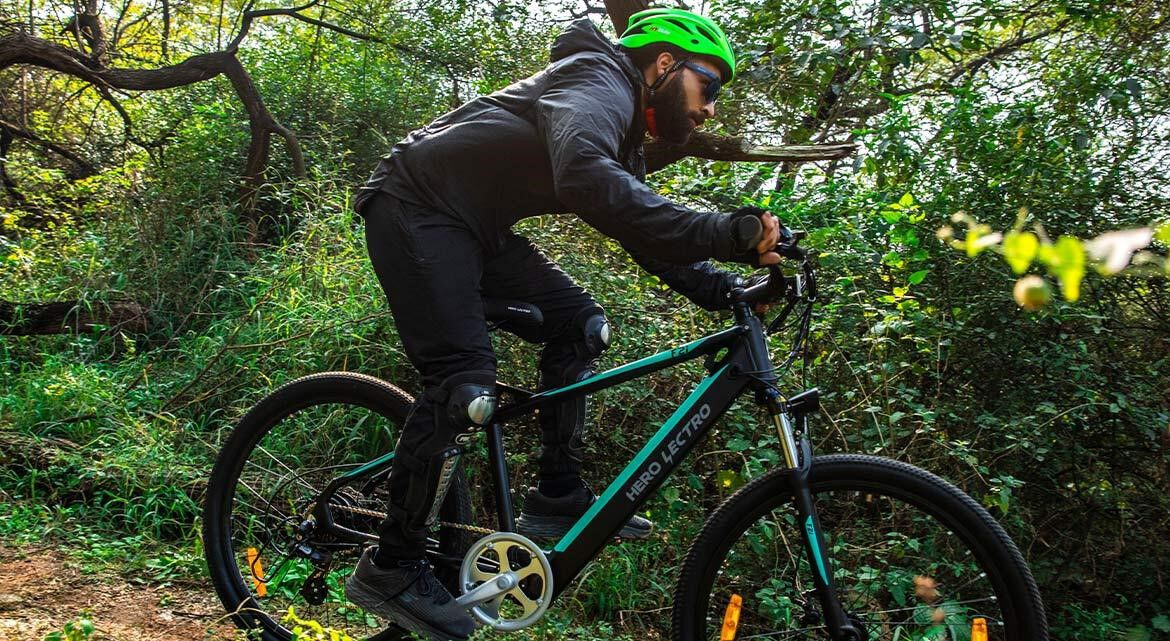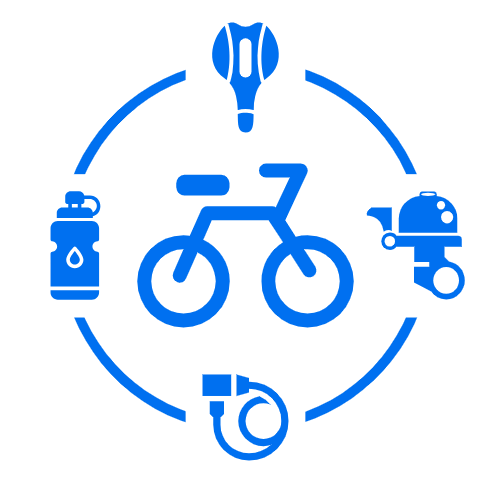Let’s Go BikePacking On Your Hero Lectro
Lectro E-BikesRabani Singh | 19 Dec, 2022

So, What Exactly is Bikepacking
Bikepacking is created by combining the best parts of mountain biking and the best parts of backpacking. Ride, camp, and then repeat. That is the motto. Bikepacking, as opposed to traditional bike touring, is done primarily off-road on trails and mixed terrain.
It's all about exploring (getting lost), camping (eating a lot of good food), and hanging out with friends. Don't be concerned if you're intimidated by things like gear and routes. The great thing about bikepacking is that it can be enjoyed by anyone.
Check out our bikepacking guide to learn everything you need to know before embarking on your first adventure.
What Should I Ride?
Any bike capable of off-road riding can be used for bikepacking, but it's best to have a setup that allows you to carry your gear on your bike. Bikes designed specifically for bikepacking will be the most capable and comfortable, making it easy to carry your gear securely.
The Hero Lectro F3i reigns supreme in this category. A tough all-terrain frame, 29" tyres for traction on any trail, an included rack system, and mountain-ready spec make it the best all-around choice for adventurers who want to go anywhere.
Other bikes in our adventure line-up would also make excellent bikepacking bikes.
Read This - Explore Places As You Go Cycling In India
What Should I Bring?
FOOD
Yes, you will require food. You'll also require water, and if you don't have access to clean water along your route, you'll require a purification system. If you don't want to eat trail mix for the duration of your ride, you should bring a stove.
Here's something to keep in mind: food is fuel. Bring only what you're used to eating. You're going to be hungrier than usual, so bring more food than you think you'll need.
SHELTER
Tent, hammock, bivy—or sleep under the stars. Your shelter setup, which includes your sleeping bag and sleeping pad, will determine how much fun you have on your trip. There are many ways to lose weight, but if you're thinking about where to burn your matches for creature comforts, this is a good place to start.
APPAREL
Layering is the key here. You want to stay cool while riding and warm when you come to a stop. A moisture-wicking baselayer, as well as a waterproof jacket and pants, are recommended in case of a downpour. After a few days in the saddle, nothing beats a fresh chamois, so bring some spares!
ESSENTIALS
This is not an exhaustive list, but it should get you thinking about the essential equipment you'll need on any adventure.
NAVIGATE YOUR WAY
GPS navigation and maps. You can do one or the other, but having both is preferable. When the battery runs out, good ol' paper maps come in handy.
LIGHTS
Lights on your bike are essential for any ride. However, keep in mind that it gets dark early in the woods. When the fire goes out, a headlamp in the tent is ideal for reading.
FIRST AID SUPPLIES
If there is one place to overpack, it is here. Expect everything from blisters to stomach bugs.
KIT FOR REPAIRS
While it would be ideal to bring the entire toolbox, when riding light, you should bring at least a flat kit, inflation, chain tool, multi-tool, and extra chain links.

FIRE STARTING MATERIALS
You'll never start a fire with a bike, no matter how hard you try. A campfire is nice at the end of a long ride, but a lighter or matches should also be considered safety equipment.
BUNGEES & ZIP TEES
These are items you'll always have on hand, whether you need to strap something to your bike or make an unusual trail repair.
NOTEPAD & PENCIL
Take pictures of your adventures. It's fun to look back and remember where you've been!
How to Travel with Your Items?
It is preferable to keep your gear on your bike. Wearing a hydration pack or a light trail pack is fine, but carrying a lot of extra weight on your body will cause fatigue.
There are numerous cargo pack options, including:
• Front and rear racks with panniers
• Saddle bags
• Bags for frames
• Handlebar pouches
• Tube top bags
Your cargo setup will be determined by the bike you're riding and will most likely include a mix of different pack options.
Where Should I Go?
It's easy to believe that bikepacking can only take place in remote and exotic locations, but the truth is that there's probably an escape right in your own backyard. You don't have to look far for adventure! For information on trails and campgrounds, check your local state parks. One of the most important factors to consider when planning your route is access to water and a way to treat it. Planning is an important part of the fun. In fact, this is where your journey truly begins.
Look up location tags on Instagram, GoogleMaps, and message boards, and dig out your dusty atlas from the glovebox. Have fun poring over the topographies to find interesting areas to investigate, however you do it.
If you're just getting started, consider a local one-nighter. Every trip teaches you something, and even a single night in the woods will reveal something you wish you'd done differently, something you wish you'd brought with you, and something you wish you'd left behind.
The Trail's Lessons
● Everything Depends on Your Attitude.
Maintain a positive attitude. If you begin to feel grumpy, you are probably dehydrated or hungry. Pounce on a water bottle and keep going. Take in the scenery of the mountains. Remember: you're on a bike, so everything is better.
● Plan Ahead of Time, But be Prepared for the Unexpected.
The unknown is part of the fun of bikepacking—you're riding to see cool new things, after all—but it pays to have a plan. You can have a true adventure while staying on track. Bikepacking forces you to be self-sufficient, and when faced with such a challenge, you can learn a lot about yourself. Prepare for it. Set out! But also return in one piece.
● Utilize What You Have.
An adventure does not require all-new equipment. You're well on your way to bikepacking if you have a mountain bike and a sleeping bag in your gear closet. You'll quickly learn what you need and don't need on the trail, and you'll be relieved not to carry more than you need.
● You do not Have to be An Expert.
Bikepacking is insanely fun regardless of skill level, and the more you do it, the more fun you'll have. Learning by doing is what makes this type of riding so enjoyable.
● It's Your Journey.
Above all, your bikepacking adventure can be whatever you want it to be. Get a bike, map out a route, gather your gear, and hit
Physical and Mental Health
It is a common belief that no amount of physical training is necessary for bicycle touring because it is not a race and you do not need to rush through. However, anyone who has been regularly cycling and is comfortable on the saddle for long duration is physically fit for the ride.
As I always say, it all comes down to mental fortitude in the end. It is extremely rare for your body to give up while on tour; instead, it is usually your mind that gives up. The heat, hardship, inability to find food or a place to stay, unfriendly roads, and other factors all take an immediate toll on your mind, leading to doubts about your own abilities. To complete the ride and maintain emotional control, you must be extremely strong-willed. Here are some strategies for staying mentally strong and controlling your emotions during the ride.
Understanding your route and terrain boosts your confidence for the ride.
Small things like being able to repair your bike, having camping equipment, and having enough food and water to survive all contribute to your mental strength.
Be ecstatic and proud of yourself for even considering a multi-day bicycle tour. That is something that few people in the world would do. It is the most important first step toward a once-in-a-lifetime adventure you are about to embark on. Few people get to take the first step.





